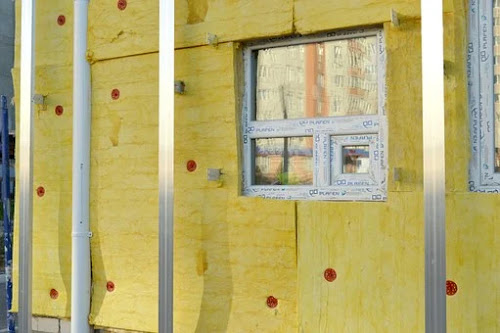How to Prevent Termites from Damaging the Wall Insulation in Your Home
- Sep 21, 2021
 Many states in the US, including Alabama, California, Florida, Texas, Louisiana, and Mississippi, witness frequent termite infestation throughout the year. Numerous urban and suburban structures in these states are standing right above multiple subterranean termite nests. Unlike damp wood and dry wood termites, subterranean termites build colonies in places with moist or damp soil.
Many states in the US, including Alabama, California, Florida, Texas, Louisiana, and Mississippi, witness frequent termite infestation throughout the year. Numerous urban and suburban structures in these states are standing right above multiple subterranean termite nests. Unlike damp wood and dry wood termites, subterranean termites build colonies in places with moist or damp soil.
Besides damaging wood, subterranean termites also destroy wall insulation, which often results in higher electricity bills. A study has found that a subterranean termite colony comprising a minimum of 60,000 individual termites can eat lumber measuring 2 feet by 4 feet in one year. A colony of nearly one million termites can eat away structural wood in homes within a short period. They can also inflict major damage on wall insulation.
Why Are Insulation Damages by Termites a Serious Issue?
Home insulation has a thermal resistance called R-value. All insulation materials come with an R-value. A high R-value indicates a higher resistance to heat loss. Despite the higher expenses attributed to an increase in the R-value of a home's insulation, it pays off in the long run as such improvement lowers heating bills.
Most insulation products come with a layer of plastic-lined paper that maximizes resistance to heat-loss. As paper contains cellulose, termites feed on the insulation lining. Such damages by termites reduce the R-value of insulation and consequently increase heating costs. In fact, termites can damage a home's insulation extensively by accessing wood. Besides paper and wood, termites can even damage insulation with fiberglass.
A study carried out in Florida revealed that termites could infest and damage a home's insulation until its efficiency in terms of warming goes down by 75 percent. In addition, researchers at the Institute of Food and Agricultural Sciences, University of Florida tested the extent to which termites can damage insulation. They used materials like plywood and foam board insulation. At the end of the experiment, researchers found that termites damage both the construction materials. However, the damage to foam insulation was more, which reduced the insulation's effectiveness by 27 percent. This is why the International Residential Code, the model building code of the US, prohibits using below-grade foam board in high-risk areas prone to heavy termite infestation.
Considering the Termite Factor When Insulating a Home
Here are the key factors to consider for preventing termite infestation while insulating a home:
1. Fiberglass Insulation: At the time of installing new insulation or repairing an old one, use standard fiberglass batt insulation and sprayed in closed-cell foam insulation.
Closed-cell foam insulation resists moisture and contains a higher R-value compared to standard batt insulation. In addition, this type of insulation strengthens the structure of the subfloor system.
2. Termite Treatment: Consult with a reputable termite control company before doing any repairs or modifications in the crawlspaces. The termite control company you consult first needs to treat the crawlspace soil before you install the liner. If your property has not gone through soil treatment and is not under warranty with a termite control firm, it would be better to get it done.
Chose a termite control company that provides excellent inspection services and a detailed estimate regarding the termite treatment.
3. Dehumidifier: It is a good idea to install a dehumidifier in crawl spaces to ensure adequate air supply. It also prevents the accumulation of moisture. Subterranean termites prefer damp or moist areas to build their colonies. This is why taking preventive measures can save you money, time, and energy.
Closing Words
If you do not have a termite control agreement for your home, think about getting one now. Termites destroy properties in the US worth billions of dollars every year. Eliminating these insects is one of the key steps towards protecting your property. If you live in and around California, we can surely help you out as we serve in as many as 15 service areas, including San Jose, San Francisco, Oakland, and Santa Clara.
We offer fumigation, non-fumigation and termite damage repair services at economical costs. To get a free estimate fill out this form here. You can also call us at (888) 322-8889, and we will be glad to assist you.





